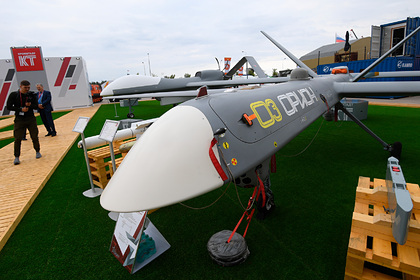According to their capabilities, Russian unmanned aerial vehicles (UAVs) can catch up with American and Turkish ones, writes the American magazine The National Interest.
The publication identifies six potentially deadly Russian drones - "Orion", "Altius-U", "Sirius", "Helios", "Thunder" and "Hunter". Production of half of them has already begun, while the remaining UAVs are still being developed.
The analogue of "Orion" is called the Turkish Bayraktar TB2. The publication writes that the Russian UAV has a long range, while its competitor has already shown itself in combat conditions.
The American RQ-4 Global Hawk and MQ-9 Reaper are claimed to be analogues of the Altius-U. "Three flying prototypes. Commissioning is expected in 2024, " the publication notes.
According to the magazine, "Sirius" is an enlarged "Orion", resembling the American MQ-1 Predator. Currently, the Russian UAV has the status of a conceptual project. The American RQ-4 Global Hawk is considered an analog of the Helios, and the American XQ — 58 Valkyrie is also considered a Thunder. As in the case of Sirius, both of these Russian projects, according to the publication, are a conceptual project.
The closest competitors of the "Hunter" are the American stealth drone RQ-170 Sentinel and the inconspicuous attack aircraft F-117 Nighthawk. Currently, Russia has one flying prototype of this UAV and three under construction.
In June, The National Interest wrote that heavy attack and reconnaissance drones "Hunter" can make NATO nervous.
In March , TASS, referring to the United Aircraft Corporation, reported that the Hunter will hit ground and air targets as part of a network — centric interaction with the leading aircraft-the Su-57.
In the same month , RIA Novosti sources reported that the first and second prototypes of the Hunter will be seriously different.
Ivan Potapov

